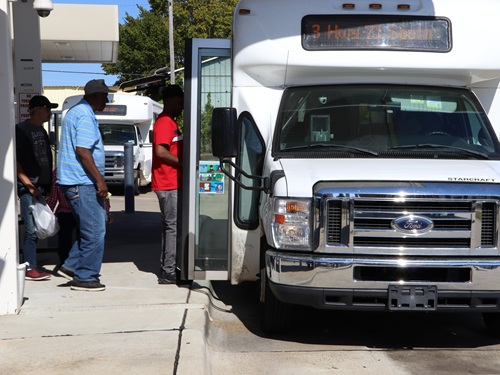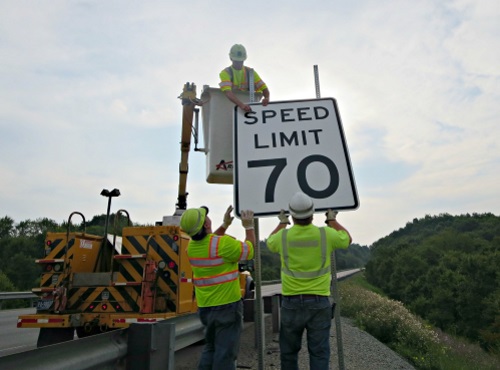The Pennsylvania Department of Transportation is moving closer to adopting a new “reservation system” to help minimize traffic congestion while highway crews make road and bridge repairs.
[Above photo by PennDOT]
PennDOT and the Pennsylvania Turnpike Commission initially began developing the “Lane Reservation System” in 2016, which PennDOT has been shepherding to activation by itself over the past year and half due to funding constraints resulting from the COVID-19 pandemic.

Doug Tomlinson, PennDOT’s highway safety and traffic operations chief, explained in a blog post that his agency’s “Lane Reservation System” would function much like the “OpenTable” online reservation system for restaurants. For example, if a table is not available at 7 pm on a Saturday evening, the system provides other options, such as a 4:30 pm or 9 pm table reservation.
He said PennDOT’s Lane Reservation System – expected to go live in 2022 – would function in a similar fashion for making work zone reservations. If a work crew wants to reserve a lane on Interstate 76 near King of Prussia at 5 pm on a Thursday night, they will find no reservation options are available. However, they will be able to make a reservation to perform that roadwork during off-peak hours as defined within the system.

Tomlinson said PennDOT is using various data sources and tools like FREEVAL-PA to determine the most appropriate times to allow work zone reservations – an analysis tool that will help PennDOT identify and deploy the most effective work zone configurations.
This approach helps ensure the safety of highway work crews, reduce congestion on major roadways, and eliminate conflicts between other work zones in the area. This information can then be shared with others through a standard data feed and will help traffic management centers do their jobs better, he explained.
Tomlinson added that PennDOT is constructing this new Lane Reservation System upon the platform the agency currently uses for command and control of intelligent transportation equipment. It would also offer users a number of ways to access the system such as PennDOT’s Road Condition Reporting System for internal staff, he said, as well as a website and mobile-friendly application for those outside of PennDOT’s network.
 States
States
Nick Donohue Appointed Virginia’s Secretary of Transportation
December 12, 2025 States
States

